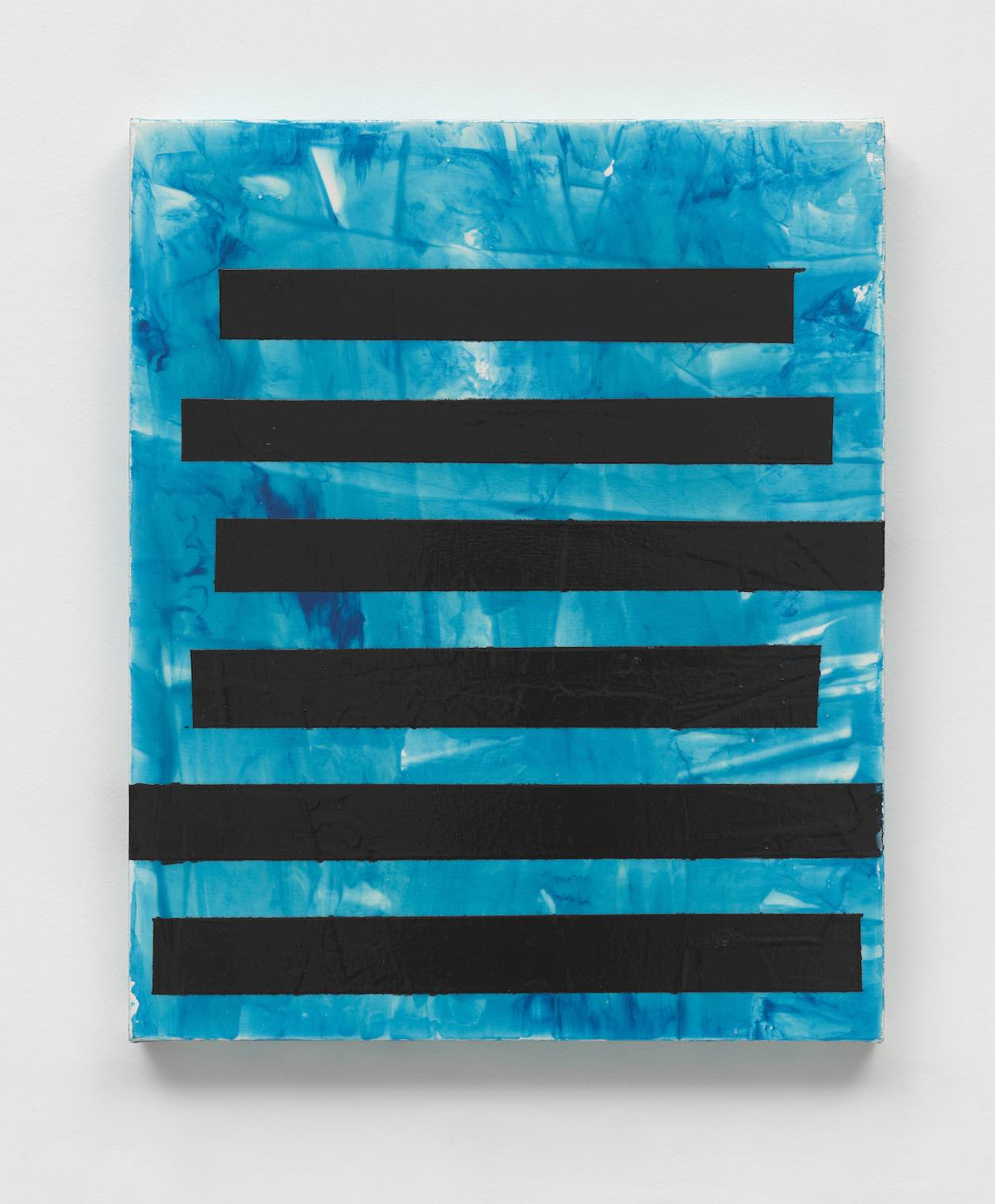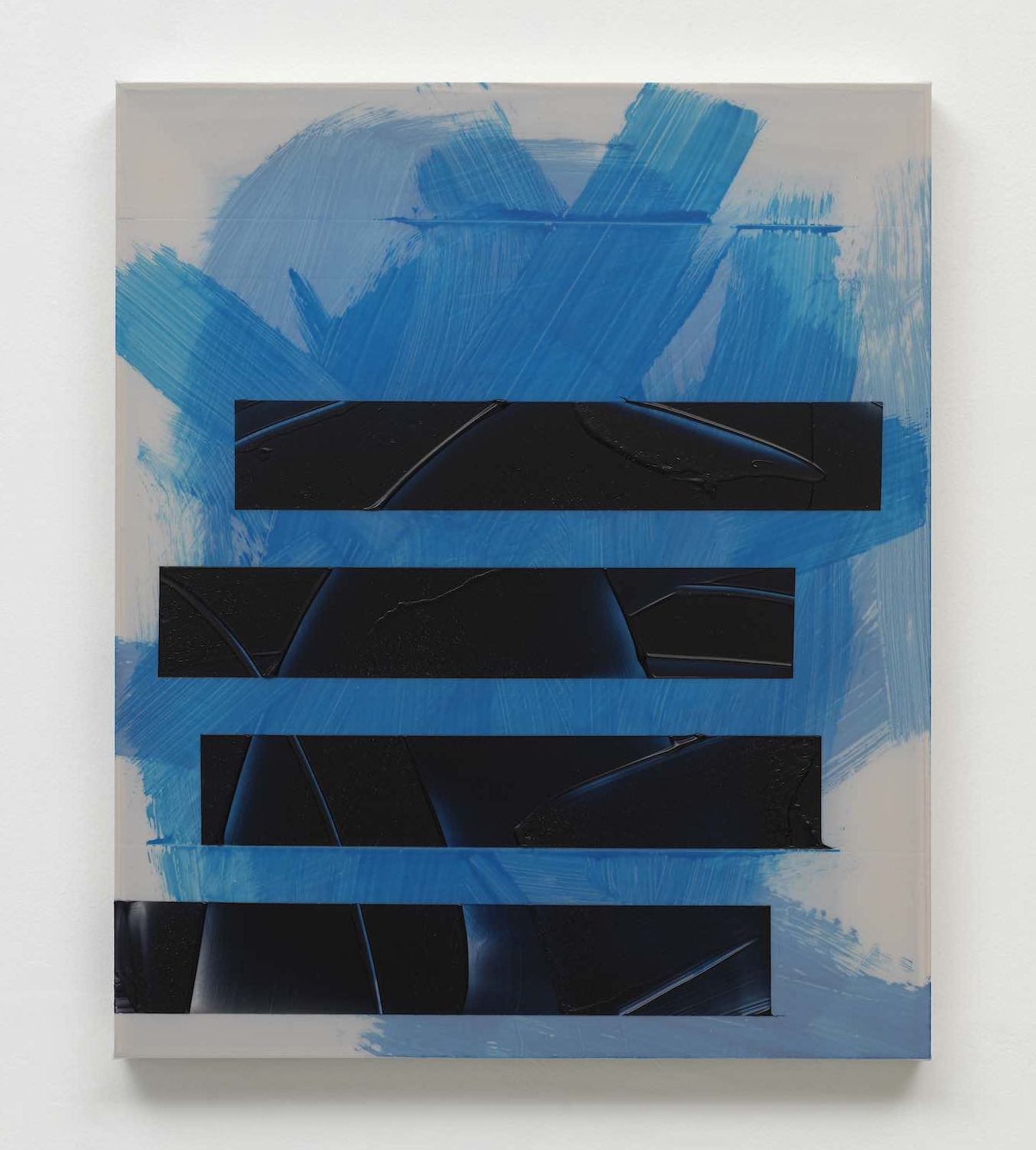Tariku Shiferaw Explores Abstraction & Repetition at SAAM

The Southampton African American Museum (SAAM) continues its series of art exhibitions with Making Space: One of These Black Boys featuring works by Ethiopian-born, NYC-based painter Tariku Shiferaw, as selected by Superposition nomadic gallery founder Storm Ascher, a Forbes 30 Under 30 honoree and one of the hottest young curators working today.
Coming on the heels of his appearance at the Hamptons Fine Art Fair in July, this SAAM exhibition marks Shiferaw’s first solo show on the East End. Making Space: One of These Black Boys spotlights paintings combining organic mark making and geometric shapes to create visionary abstract works rooted in both painterly process and intellectual exploration.
The compositions rely heavily on juxtaposing unevenly stacked black or dark-colored horizontal bars atop painterly color fields, which Shiferaw describes as being born from exploring materials and refining his subconscious direction, which came through the act of painting and sketching, and finding the powerful and evocative themes that emerge through his creative process.

A Conversation with Tariku Shiferaw
“I was dealing with all sorts of geometric forms, all sorts of shapes, all sorts of gestures,” he says, explaining how the work began taking shape in 2016. “In that particular body of work, I was working on the idea for these engaging geometric forms and how they have so many different meanings, to a point where they cannot necessarily mean one thing,” Shiferaw continues, adding, “I loved our inability to make them mean something unless you contextually put them into something.”
He points to the letter X, or X shape, as a perfect example of something loaded with meaning, depending on its context: “X meant crossing something out, unwanted, or wanted, or marking the place that you want, that you want to get to on a map. And the constellations,” Shiferaw says. “Or X in the English language being a letter that forms a word that has a meaning. In that, X is this unknown variable that keeps itself as a placeholder until the figure is found out, until the variable is found out.”
The question, Shiferaw began to understand, was about showing intention with these forms that could be steeped in so much meaning — or no meaning at all.
“X is so convoluted, it’s so compacted with all these meanings and history … how do I create a form that shows intentionality of a thinking being?” he asked. “And that’s when I thought about repetition. Repetition is a way to display intentionality, that someone has done something purposely.”
That’s the moment he knew his focus would turn toward the bars. “These bars, somehow they’re subconsciously showing up in my work anyway, and my sketchbooks. They’ve shown up over 100 times in my tiny little sketchbooks. I’m like, what if I’m able to focus on that?” he recalls, noting that he began painting both horizontal and vertical bars.
While the vertical bars had some interesting connotations, like standing figures or window shutters, the artist found something truly special in the long, horizontal rectangles.
“When they were horizontal, they did something magical. And that’s when I got super interested in how these works operated … they become almost like a script or a text, or bars that, like FBI redacted forms, engaged a written document, or the deletion or hindrance of your ability to get information,” he says, reflecting on the work with words like “deletion, hiding something, erasing” and more.
“I love that about these horizontal forms,” Shiferaw says, revealing how process then gave way to more conceptual thinking, like how the dark shapes “engaged concepts of historical erasure, intellectual property” and other issues around art.

Ascher, the show’s vaunted curator — who had the challenge of finding just the right combination of pieces, and sizes, to fit in SAAM’s small gallery space — points out that Shiferaw also loads meaning behind his color choices, using primarily black and blue, which she says emerged while he was listening to Louis Armstrong’s song “Black and Blue,” and ignited a profound reflection for Shiferaw on the political connotations of color.
She goes on to note that the artist draws inspiration from “the music industry’s fascination with Black entertainers who innovated how the world listens to music.” Each painting’s title is a song from traditionally Black genres of music such as hip hop, R&B, jazz, blues, reggae, and others. “This inclusion of music as a form of mark-making raises profound questions about authorship as historically Black entertainers did not have the rights to their own creations,” Ascher says, describing the similarities between Shiferaw’s shapes and those of redacted blocks of text.
But that is just one more layer of meaning. “At the same time, I had to be honest that they were also inspired by these stacked up shipping palettes I used to see growing up in Los Angeles … and even more in my face when I got to New York City,” the painter adds.
And of course, Shiferaw’s greatest realization comes in a simple but compelling statement about discovering clarity through process and distilling one’s vision to its most important essence. “By closing it in, it really opened a lot for me,” he says.
Making Space: One of These Black Boys is on view through November 30 at the Southampton African American Museum, 245 North Sea Road in Southampton. Visit saamuseum.org to learn more.
To see more work by Tariku Shiferaw, visit tarikushiferaw.com.



